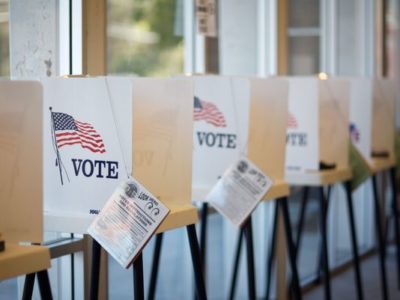Mobilizing Environmental Voters
Legal Planet: Environmental Law and Policy 2024-05-09

Environmental issues such as climate change are broadly shared concerns, but for many they are low priority issues. Obviously, environmental advocates would like to raise the profile of those issues among voters. But it is also true that the environment is a priority for some people who don’t vote. Some efforts are underway to change that. I’ll describe three of them in this post, starting with the best-known group.
League of Conservation Voters: Climate Vote 2024. This program involves research and polling, testing climate messaging, and hiring and training canvassers. LCV claims that its program to “reach and persuade 1.58 million specific voters in battleground states — and follow-up analysis found that our program increased the Democratic vote margin by 5.6 percentage points among these voters on Election Day.” LCV invests “early in TV and digital communications to define candidates and respond to attacks. We use research to identify key voters and create effective persuasion and mobilization plans.”
Environmental Voter Project. (EVP). EVP estimates that “over 8 million environmentalists did not vote in the 2020 presidential election and over 13 million skipped the 2022 midterms.” EVP is a distinctive effort along several dimensions:
- EVP focuses on changes in long-term voting rather than specific elections.
- It has used random experiments to gauge the effectiveness of its actions.
- It has the most detailed description of its efforts, making it easier to assess its work.
In EVP’s view, “You can’t change someone’s voting behavior if you only talk to them every 2 or 4 years, so we work year-round in every election, regularly checking public voter files and following up with our voters until they become consistent super voters. EVP estimates that about 1.5 million of the 9.5 million people it has contacted have now become steady voters.
California Voters Education Fund. The focus of this project seems to be in the Central Valley, the Inland Empire, and Los Angeles. It seeks to remove barriers to voting by low turnout groups like young people and people of color. It also seeks to create a network of interested groups to lobby in Sacramento. It sponsors Green Advocacy Day, when members of the network meet with over a hundred legislators and staffers in Sacramento. Bringing environmental advocacy to California may seem a bit like bringing coals to Newcastle or ice to the Arctic. But behind California’s reputation for environmental protection there is a lot of tough political infighting. A key question about this program is whether it could be used as a model in other states.
It’s certainly true empirically that candidates favoring climate action are generally Democrats, but for our purposes, the partisan implications are not the point. Rather, it is the potential impact on climate policy.
I would be happier to live in a world where, as in the 1970s, there was a consensus in favor of environmental action that transcended parties. In that world, mobilizing voters who care about the environment would be less important. Alas, that is not the world we live in.
Instead, we live in a world where environmental issues are intensely political, but many people who care about issues like climate change don’t end up voting. That’s not a good combination.